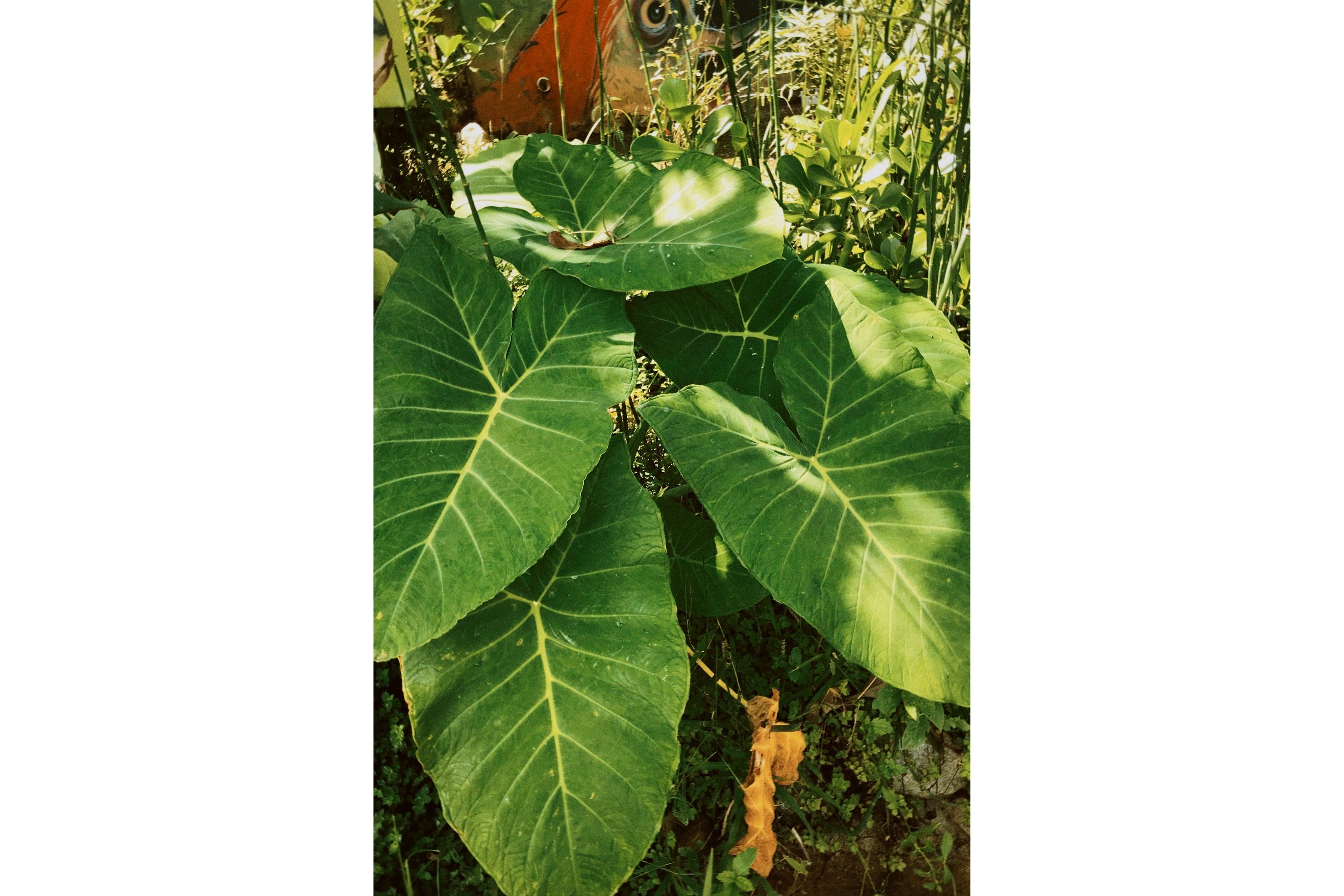Elephant's ear
(Xanthosoma helleborifolium)

Description
Xanthosoma helleborifolium is a species of Liliopsida first described by Nikolaus Joseph von Jacquin, and given its simplified Asian name by Heinrich Wilhelm Schott. Xanthosoma helleborifolium belongs to the genus Xanthosoma, and the family Araceae. Xanthosoma is a genus of flowering plants in the arum family, Araceae. The genus is native to tropical America but widely cultivated and naturalized in other tropical regions. Several are grown for their starchy corms, an important food staple of tropical regions, known variously as malanga, otoy, otoe, cocoyam (or new cocoyam), tannia, tannier, yautía, macabo, ocumo, macal, taioba, dasheen, quequisque, ʻape and (in Papua New Guinea) as Singapore taro (taro kongkong). Many other species, including especially Xanthosoma roseum, are used as ornamental plants; in popular horticultural literature these species may be known as ‘ape due to resemblance to the true Polynesian ʻape, Alocasia macrorrhizos, or as elephant ear from visual resemblance of the leaf to an elephant's ear. Sometimes the latter name is also applied to members in the closely related genera Caladium, Colocasia (taro), and Alocasia. The leaves of most Xanthosoma species are 40-200 cm long, sagittate (arrowhead-shaped) or subdivided into three or as many as 18 segments. Unlike the leaves of Colocasia, those of Xanthosoma are usually not peltate- the upper v-notch extends into the point of attachment of the leaf petiole to the blade. The name is derived from the Greek words ξανθός (xanthos), meaning "yellow", and σῶμα (soma), meaning "body". It refers to the stigma or yellow inner tissues. The inflorescence in Xanthosoma is composed of a spadix with pistillate flowers at the base, a belt of sterile flowers offered as a reward for pollinators in the middle and staminate flowers on the upper part. Prior to opening, the inflorescence is enclosed within a leaf-like spathe. When the inflorescence is ready to open, the upper part of the spathe opens and exposes the staminate area of the spadix; the basal area of the spathe remains closed, forming a spacious chamber (i.e., the spathe tube) that encloses the pistillate and sterile flowers (Garcia-Robledo et al. (2004, 2005a, 2005b)).
Taxonomic tree:







